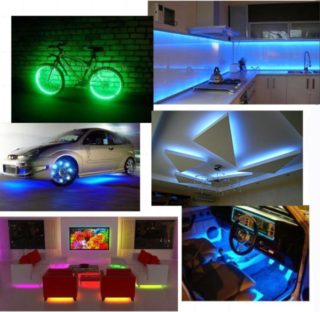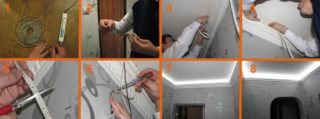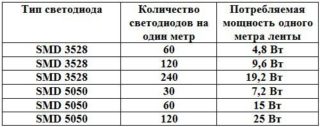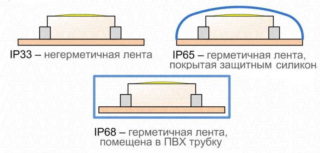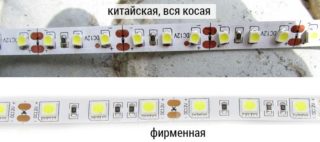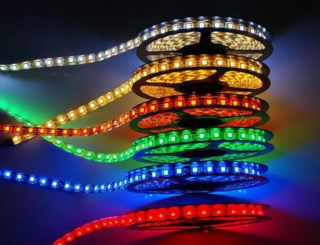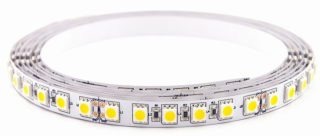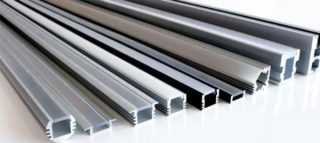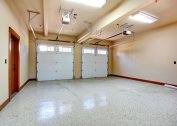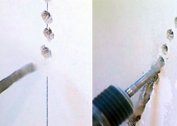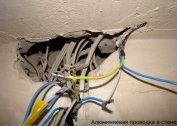LED strips are flexible strips with LEDs and an adhesive base. They are used as a backlight or main lighting. PCB technology creates thin luminaires that easily fit in tight spaces. The economical energy consumption and the enormous possibilities of design solutions have made them the most popular lighting option.
Scope of LED strip
LED strips are indispensable for decorating ceiling structures, creating highlighting of individual furniture and interior details. LED lighting devices decorate facades, cars, advertising banners and concert venues. Multicolor models create exciting compositions, create the effect of running lights. Hermetic lamps adorn fountains and pools.
How does LED strip work
The lighting source is a printed circuit board located on the dielectric strip. The substrate is different in color, width, length. A common option is bays of 5 meters. Separate LEDs are connected by conductive paths; there are also resistors in the circuit.
Most of the models operate on a constant voltage of 12, 24 or 36 V. Power is supplied by special units that convert the mains voltage of 220 V. LED matrixes consist of 1-3 crystals, they come with white or colored light.
Advantages and disadvantages of backlighting
The main advantage of flexible ice luminaires is unlimited design possibilities in the decoration of rooms. Also, the advantages of the devices include:
- low power consumption;
- no need for system maintenance;
- high working resource (30-50 thousand hours);
- safety of use due to low voltage;
- availability of self-assembly;
- lack of harmful components in the design.
Disadvantages:
- The high cost of products. High-quality lighting will cost 200-500 rubles per 1 meter.
- The need to replace old fittings.
- Most of the LEDs used give a color rendering index below 80, but for backlighting this is an acceptable indicator.
- Fragility of conductive tracks with repeated bending.
Specifications
When choosing a lighting device, buyers should focus on its technical characteristics. To tape gave a sufficient amount of light, take into account the power, size and number of diodes.
Dimensions and density of the crystals
Dimensions of crystals are indicated in the product labeling. Popular Views:
- 3528 - 3.5 × 2.8 mm, 1 crystal;
- 5050 - 5 × 5 mm, 3 crystals;
- 2835 - 2.8 × 35 mm.

In addition to dimensions, the brightness of the ribbon light depends on the number of diodes per 1 meter. Also, the power consumption is associated with the density of accommodation. Standard values: 30, 60, 90, 120 pieces. A denser installation is carried out in 2 rows, allowing you to place 240 chips on 1 meter.
The length and power of the tape
The power parameter is related to the size and density of the LEDs. Manufacturers indicate it for each model. Usually it is designed for a segment of 1 meter, but some companies provide information along the entire length of the reel (5 m). Example for comparison:
- 60 smd 3528 LEDs - 4.8 W / m;
- 60 SMD 5050 LEDs - 15 W / m.
Thanks to the dimensions, the capacity has grown 3 times. The length of the product depends on the distance at which it will be installed. Standard lengths of 5 meters can be shortened or increased. Stripes are cut by marks. The connection is made by soldering. The total power of the lighting device is calculated by the formula: the specific power of 1 meter is multiplied by the length. The power supply is selected with a margin of 20-30%.
Luminous flux and light output
When choosing a device for backlighting, the exact amount of luminous flux is not calculated. Enough optical perception. The main lighting is arranged according to the standards. In living quarters, 150 lm / m2 is required. A special table contains data for each type of LED that determines the luminous flux of 1 meter of tape and its equivalent in incandescent lamps. Experts suggest taking devices with 120 or 240 diodes for lighting.
Security class
The scope of use of the lighting device depends on the degree of protection. The indicator determines the tightness of the LEDs of the tape. The class is indicated by the letters IP and two digits. The first indicates the degree of protection against mechanical stress, the second - from moisture. The minimum parameter is IP20, the device is isolated from dirt particles, but does not tolerate moisture. If the lighting will come in contact with water, it is advisable to take the product with a degree of at least 4.
IP66-68 class lighting can be installed on facades, in pools and other bodies of water.
LED strip marking
 The main data on ice-lamps is collected in its marking:
The main data on ice-lamps is collected in its marking:
- CW, R, B, G, RGB - glow color (white, red, blue, green, multicolor);
- diode size;
- the density of the tape LEDs per 1 meter;
- security class;
- RT, RTW - tape version (open, sealed);
- length;
- supply voltage.
Manufacturers may indicate the color of the substrate.
How to choose a high-quality backlight
In order for the backlight to serve reliably and for a long time, you should take products from well-known companies Osram, Philips, Cree. When buying a budget series, you will have to carefully consider the product. The main criteria:
- equal arrangement of diodes;
- the same distance between the chips;
- uniform coverage;
- marking and logo of the manufacturer;
- similar brightness of elements at different ends.
Choosing a high-quality LED is half the battle; you need to correctly install a lighting fixture.
Types of LED Strips
Depending on the characteristics, lighting devices are divided into several main groups.
By color:
- Monochrome or monochrome systems - a budget option for home lighting. They are white or one of three colors - red, green, blue. For LED strips of monochrome design, it is enough to connect to the power supply circuit. It is carried out by clamping terminals observing the polarity. Monophonic lighting is suitable for the kitchen, nursery, stairs, cabinets.
- Multicolor - RGB tapes can recreate the glow in various shades. To connect them is not enough adapter, a controller is required. At the edges of the strips there are 4 wires, three of them for the controller, the fourth for power. The device controls the color change and luminous flux. Bright lights decorate facades, cars, shop windows.
By execution:
- Open - they are characterized by a minimum degree of insulation; a thin coating of dust-proof coating is applied to the chip body. Under the influence of moisture, the device fails. Products are recommended for concealed interior lighting.
- Sealed - printed circuit boards are covered with a layer of plastic or silicone. They do not leak moisture and dirt particles. The reliability class of the strip LEDs indicates the reliability of insulation.
In the direction of the glow:
- Frontal - angle of dispersion 120 °, the light is directed perpendicular to the surface of the tape. This is the most common option.
- Lateral - a dispersion angle of 90 °, diodes shine along the plane. The scope is advertising constructions, interior details.
Tapes "Running Fire"
Each LED in the tape controls its own controller. Devices are soldered into one chip. When choosing a controller for the system, it is necessary to take into account its compatibility with integrated circuits.
Devices with the "running fire" function are installed in entertainment facilities for landscape decoration.
How to save backlight for a long time
The resource of ice backlighting from famous manufacturers is 30-50 thousand hours. To prevent degradation of crystals prematurely, it is necessary to exclude overheating of elements. The maximum temperature is 40 ° C. It can be exceeded with prolonged load, the location of the device near a heat source. It is not recommended to use sealed tapes without a cooling system. The destruction of crystals leads to a loss of brightness.
To prevent the negative effects of heating allows mounting on an aluminum profile. It promotes heat dissipation. A matte or transparent screen is purchased for the profile.
Additional criteria for selecting backlighting is the color of the base. The substrate may be white, black, brown. It must match the surface on which it is mounted. The quality of the adhesive layer is important. It holds best on horizontal surfaces. In some cases, additional fastening is required.
